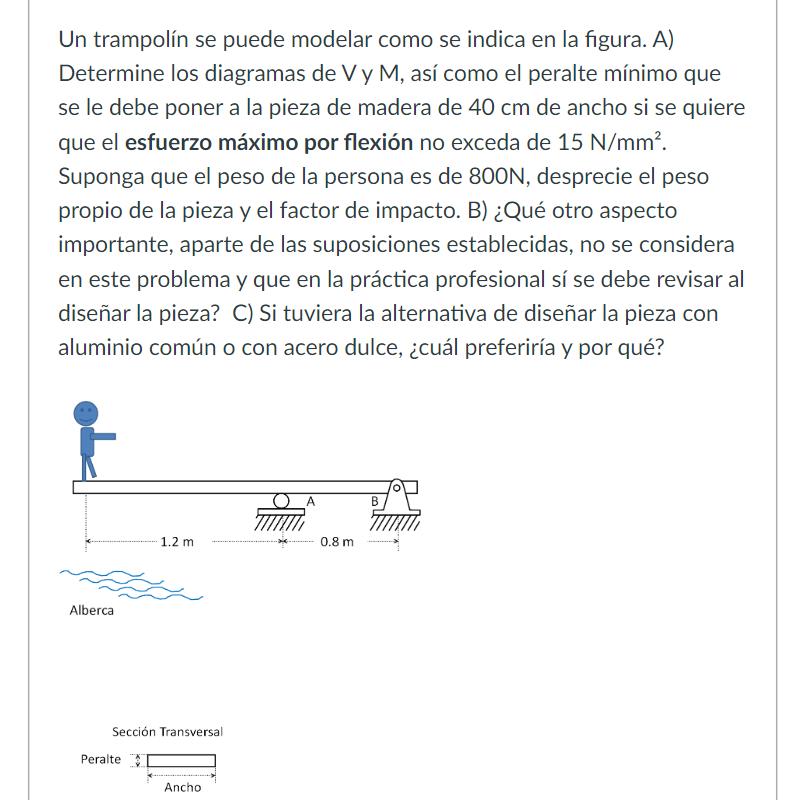¡Tu solución está lista!
Nuestra ayuda de expertos desglosó tu problema en una solución confiable y fácil de entender.
Mira la respuestaMira la respuesta done loadingPregunta: A trampoline can be modeled as indicated in the figure. A) Determine the V and M diagrams, as well as the minimum camber that must be applied to the 40 cm wide piece of wood if you want the maximum bending effort to not exceed 15 N/mm². Assume that the weight of the person is 800N, neglect the self-weight of the part and the impact factor. B) What other
A trampoline can be modeled as indicated in the figure. A) Determine the V and M diagrams, as well as the minimum camber that must be applied to the 40 cm wide piece of wood if you want the maximum bending effort to not exceed 15 N/mm². Assume that the weight of the person is 800N, neglect the self-weight of the part and the impact factor. B) What other important aspect, apart from the established assumptions, is not considered in this problem and that in professional practice should be reviewed when designing the part? C) If you had the alternative of designing the part with common aluminum or mild steel, which would you prefer and why?
- Intenta enfocarte en un paso a la vez. ¡Tú puedes!SoluciónPaso 1Mira la respuesta completa
Iniciamos elaborando un diagrama de cuerpo libre de el trampolín, el cual será considerado como una ...
Paso 2 DesbloqueaPaso 3DesbloqueaPaso 4DesbloqueaPaso 5DesbloqueaRespuestaDesbloquea
DesbloqueaPaso 3DesbloqueaPaso 4DesbloqueaPaso 5DesbloqueaRespuestaDesbloquea

Estudia mejor, ¡ahora en español!
Entiende todos los problemas con explicaciones al instante y pasos fáciles de aprender de la mano de expertos reales.
